Amy Sue Nathan's Blog: Women's Fiction Writers, page 12
February 14, 2017
Cover Reveal for Left To Chance
Happy Valentine’s Day! It’s with lots of love for you, blog readers, that I share this with you today!
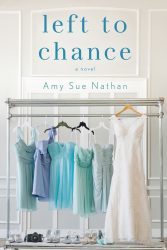
I didn’t think St. Martin’s Press could possibly give my third novel a cover I loved more than the first two. I mean, truly.
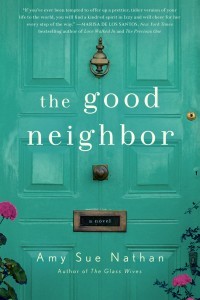
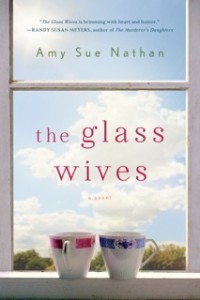
I’ll be back this weekend with more Writing Life posts! I just finished copy edits for Left To Chance and I’m busy writing The Last Bathing Beauty, but I miss the constancy of the blog, and I do have some great guest posts coming up.
More soon!
Amy xo
January 14, 2017
Writers Read!
Writers are readers. Or, they should be. Those of us fortunate enough to be published have readers of our own, and we’re readers for others, aren’t we? We’re fans!
That’s why Tall Poppy Writers has created a readers’ group, because not only can we embrace our readers in this new group, but so we can BE embraced by some of our favorite authors! .
The page will be all about books! Tall Poppy Writer books and other books! We’re going to have contests open only to BLOOM members, unique prizes, book giveaways you won’t find anywhere else, and lots of bookish conversation with some of today’s most popular authors of women’s fiction, literary fiction, domestic suspense, and a smattering of just about everything else!
Join us by clicking here:
I’m a reader who wants to talk about books and win cool stuff so I’m joining BLOOM!
or just search: BLOOM. An Exclusive Group For Readers of Tall Poppy Writers—on Facebook!
(And don’t forget to click so that you receive BLOOM notifications. Otherwise, how will you win anything?)

January 3, 2017
What’s the story with backstory? Free Webinar with Lisa Cron and Jennie Nash!
What’s the story with backstory, right? FIND OUT! Click here to register for the FREE WEBINAR (see? some of the best things in life ARE free) with Lisa Cron and Jennie Nash, and I will be there too! Sign up even if you can’t be there in person, because registrants will get the webinar emailed to them when it ends!
I’ve worked with Jennie and Lisa and Story Genius and Author Accelerator writers as a book coach. This is a great opportunity to go INSIDE STORY GENIUS!
It’s a 40-45 minute webinar with about 15 minutes for a live Q&A! Have a question for Lisa, Jennie, or me? Write it in the comments and I’ll pass it along!
Here’s the registration link you can grab and share: http://bit.ly/WritingBackstoryinWomen...
Or just send folks here: http://womensfictionwriters.com
And feel free to share the graphic below!
Hope to see you there! (And I do mean you’ll see us. This is video, baby!)
Amy xo

December 28, 2016
It’s Always About Writing, Princess
Carrie Fisher was my second cousin.
I never met her. I had emailed a few times over my writer-lifetime, but to the best of my knowledge she had nothing to do with her father, Eddie Fisher’s family. I was never looking for a high-profile connection, just a regular one. I never expected a reply, and the relationship had again been relegated to party banter and Amy-trivia. (It’s about all I’ve got!)
Her grandfather, Joe Fisher, was my grandmother’s, Mollie Tisch’s, oldest sibling. Joe changed his name to Fisher from Tisch. The sisters, Pearl, Bertha, and Mollie, changed their names when they married, as women did back then (and some still do). Her famous father, Eddie Fisher, was my mother’s first cousin, and he grew up in Philadelphia like everyone else in our family, before his left coast/Debbie Reynolds/Elizabeth Taylor life.
During high school I interviewed Aunt Bertha about their trip to America from Russia in 1913. My grandmother was about four and Uncle Joe was a teenager. The story I remember most fondly is how Uncle Joe’s hat flew off in the wind. No more hat for Uncle Joe – which was a big deal for an Orthodox Jew with no way to cover his head. I have always been interested in the plight of Eastern European immigrants, and wrote my senior college thesis on Sunday New York Times Editorials’ On Eastern European Immigrants in 1910. Or something like that. I don’t remember exactly, but I do know I used MICROFILM to read these editorials. I think I got a B. Or I like to think I got a B.
Anyway, what does this have to do with writing?
As you know, I’m writing book 4 and it’s set in South Haven, Michigan. No, that has nothing to do with huddled masses yearning to breathe free. But…in the early 1900s through 1930s, families from Chicago and Milwaukee—mostly Jewish families—arrived in South Haven, Michigan via steamship on Lake Michigan. The same kind of steamship that likely carried the Tisch family from Russia to America.
Just the other day I was contemplating a prologue (shoot me, I know) about how Boop’s ancestors found themselves on the Southwestern Michigan shore in the early 1900s. I was thinking about little girls standing on a steamship, wondering what was going to happen next.
I know my grandmother’s story. Now I can’t wait to write the rest of Boop’s!
Happy New Year, friends!
Amy xo
PS I didn’t have to stretch too far to circle back to WF with this one, did I?
PPS Here’s a photo I’m using as inspiration for 18 year old Betty (better known as Boop). Ignore the palm trees.
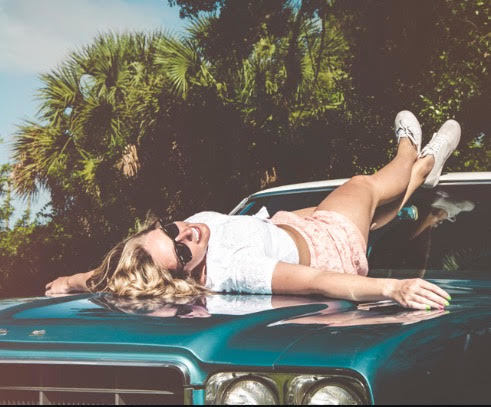
December 2, 2016
Where In The World Is WFW?
Hi friends!
It’s been three weeks since I’ve posted here, but I have a good excuse, I promise.

I sold the house in the Chicago suburbs (which was a six month process I wouldn’t wish on my worst enemy) where I’d lived for eighteen years, where I’d had the worst of times and the best of times; where I raised two kids and three dogs; where I wrote three novels.
I arrived in Jenkintown, Pennsylvania—fifteen minutes from where I grew up—where I left twenty-six years ago at the age of twenty-six—just two weeks ago.
The house I left was about 3000 square feet. The apartment I moved into is about 800 square feet. I have taken the downsizing trend to the max (go small or go home, right?). So, while I haven’t been writing (I have been editing, my writers have not suffered!) I have been unpacking and reconnecting.
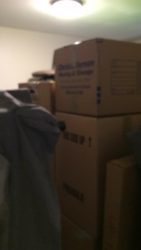
One of the many interesting things I’ve found while unpacking boxes I packed six months and many years ago, was a notebook with one scribbled page of ideas that might have more files on an old computer, or it might not. I loved what I found and maybe I’ll use the ideas somewhere else. You see, I’ve always believed in the sacred “Outtakes” file I use and suggest to my editing and book coach clients. It’s the best way for me to trick myself into thinking I’ll use what I delete. Now, I might just prove myself right.
While I’m loving writing about Grandma Boop and Hannah in The Last Bathing Beauty (you remember them, don’t you?) I’m going to save this notebook and maybe revisit Ruby, Diamond, and Pearl Bliss another time.
Here’s some of I found that I could decipher, in no order (which is the way it’s written) and with no real context, which is exactly how I found it, and how my brain works.
My sister sat on the steps of the bridal shop in a hoop skirt wedding dress looking like a smashed cupcake.
As her daughters, we’d have preferred a little more caring and a little less cavorting, but it made life fun.
I knew Ruby had no intention of getting married, but what I didn’t know was that she was moving in with me. My little sister had ruined every relationship she had except the one with me.
I can imagine the whole story (not sure I remember my intentions), can’t you? But it will have to wait!
I’ll share with you soon about the big changes I’ve made to The Last Bathing Beauty…but otherwise December will be blog-lite here at Women’s Fiction Writers. We’ll kick off 2017 with a regular schedule of writing posts and author interviews.
In the meantime, we’re settling in!
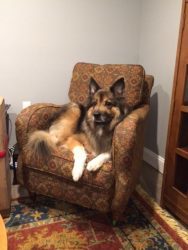
Amy xo
November 9, 2016
Guest Post: Author Karin Gillespie Struggles With Literary Snobbery
When The Glass Wives was published in 2013, I was taken aback when some readers said my novel was an easy read. I’d spent FOUR YEARS writing it. Sentences were painstakingly composed. Characters were crafted from the inside out. The manuscript was edited, revised, rewritten, and then edited again. Others said it was a light read. So I wondered–how many grieving children does it take to write a heavy read? And was that what I wanted? The answer was no.
And then it hit me.
IT’S HARD TO WRITE AN EASY READ.
I flipped my internal switch and that which I considered a slight became a compliment.
Today we have Karin Gillespie sharing with us her experience with real life literary snobbery and how it inspired her latest novel, Love Literary Style.
Please welcome Karin to WFW!
Amy xo
Struggling With Literary Snobbery
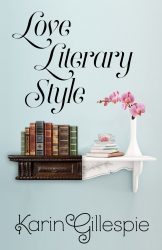 When my debut novel, a lighthearted Southern tale, came out in 2004, one of first reviewers said, “It’s a fun read but Gillespie is no Flannery O’Connor.” For heaven sakes, I thought, who said I was trying to be Flannery O’Connor? I was fully aware my novel, unlike Flannery’s fiction, fell into the “guilty pleasure: category. And besides, there’s definitely a place for fluffy fiction. I often get letters from readers who are facing difficult circumstances, and they claim my novels cheered them. That’s a good thing, I’d tell myself. But if I’m going to be perfectly candid, the snobbery against my books, which I’d experienced more times than I liked, stung some.
When my debut novel, a lighthearted Southern tale, came out in 2004, one of first reviewers said, “It’s a fun read but Gillespie is no Flannery O’Connor.” For heaven sakes, I thought, who said I was trying to be Flannery O’Connor? I was fully aware my novel, unlike Flannery’s fiction, fell into the “guilty pleasure: category. And besides, there’s definitely a place for fluffy fiction. I often get letters from readers who are facing difficult circumstances, and they claim my novels cheered them. That’s a good thing, I’d tell myself. But if I’m going to be perfectly candid, the snobbery against my books, which I’d experienced more times than I liked, stung some.
In 2008, when the publishing imploded, I thought it’d be wise to take a break and get my MFA. By this time, I had five books published, all commercial novels or as academics call them, genre fiction.” In the majority of MFA programs, the goal is to write literary fiction, and genre fiction is seen as a much lesser art form. I basically knew that going in, but there was one instructor who wanted to make certain I didn’t miss the point..
In front of the entire workshop, he deemed my novels as mere “parlor fiction” (of interest to women only, as he put it), and proceeded to tell me that genre fiction was worthless. He claimed, “I could easily write a bestselling novel, but I wouldn’t lower myself that way.” It was one of the worst days of my life, and he shamed me so thoroughly I almost quit the program.
But, happily, I ended up sticking it out. Later I wrote about my MFA experiences in an essay for the New York Times called “Masters in Chicklit.” The article went viral, and authors like Elizabeth Gilbert and Anne Rice shared it on social media. I got dozens of supportive letters and comments. It seemed almost very writer had an experience similar to mine, and they wanted to share it.
I’m delighted to say that the uppity instructor no longer teaches for the program (for reasons that have nothing to do with me), and the rest of my MFA instructors were wonderful and warm. But clearly, literary snobbery is alive and well in America or else my article wouldn’t have resonated with so many people. That NY Times article inspired my latest novel, Love Literary Style, which is about a relationship between a stuffy literary writer and a vivacious, self-published romance author, and how their union suffers when she becomes more successful than he.
From what you’ve read so far, you might imagine genre fiction will come out on top in Love Literary Style, but that’s not at all true. I genuinely tried to fairly portray both sides. In fact, I strongly believe that literary writers can learn much from genre writers and visa versa. Initially, because my instructor was so unkind, I was a little resistant to what my MFA program had to offer and I feared they were trying to change me completely. But gradually I loosened up and started to take in some very valuable lessons. My instructors taught me the art of nuance, and how to go much deeper with my themes and characters. While I’m definitely still a commercial writer, my new strengths are reflected in the reviews I’ve been getting for the books I’ve written since the program.
Likewise, literary writers can learn volumes from commercial writers, particularly when it comes to structure issues. Structure and plot concerns get little or no airtime in MFA programs, and, unfortunately, it shows in the novels. During my MFA program, I did extensive research on structural concerns and presented it at the end of the last semester. It proved to be a revelation for a number of writers, and I’d be glad to send it to any of you who want to improve in this area. Just email me at karin.gillespie@gmail.com.
Agents and editors are always saying they want upmarket fiction, which is a marriage of the best elements of gene and literary fiction. Think of novels like A Man Named Ove, The Light Between Oceans, and Me Before You. Such novels appear on the bestselling lists and stay there for weeks, instead of slipping off after a week or two. Which just goes to show you, no matter what kind of writer you are, there’s always something valuable to learn from writers who are different from you. Just don’t let your biases get in the way.
 Karin Gillespie is the national bestselling author of six novels and has an MFA in Creative Writing from Converse. Her nonfiction writing has appeared in the New York Times, Washington Post and Writer Magazine. She writes a book column for the Augusta Chronicle and a humor column for August Magazine. She’s also a part-time writing instructor at Augusta University.
Karin Gillespie is the national bestselling author of six novels and has an MFA in Creative Writing from Converse. Her nonfiction writing has appeared in the New York Times, Washington Post and Writer Magazine. She writes a book column for the Augusta Chronicle and a humor column for August Magazine. She’s also a part-time writing instructor at Augusta University.
You can find Karin on Goodreads: https://www.goodreads.com/book/show/2... on Facebook: https://www.facebook.com/karin.gillespie, and on her website: http://karingillespie.net/.
November 2, 2016
Guest Post: Embracing My Pen Name by Sarah Stonich/Ava Finch
I’ve made up plenty of pen names for myself, though I never plan to use them. This is part of me being a planner, a just-in-caser. I’ve used family names, my kids’ middle names, names I never named my children. Seems like it would be freeing and fun—maybe also confusing.
Today, Sarah Stonich aka Ava Finch shares the story of her pseudonym with us!
What would you do? What’s your maybe pen name? If you use a pen name, how do you handle it?
Please welcome both Sarah and Ava to WFW today!
Amy xo
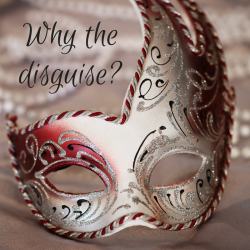
by Sarah Stonich/Ava Finch
Since adopting the pen name Ava Finch, readers often ask me why, sometimes with a bit of a look, as if I might be cheating on myself – as if there exists some moral code for authors about being true to thine identity, or genre. Or something. Fellow writers are more curious, How does that work? Is it a secret? Does your publisher know?
When I first dangled my manuscript of Fishing With RayAnne to a few connections in publishing, they loved the premise of a camera-shy host of the first all-women’s fishing talk show on public television, and related to the strong, funny female characters. Still, I was advised to drop the alias. Editors don’t like it. Again the suggestion that adopting a pen name is a subversive, or even dishonest act.
I’m not hiding behind Ava. I am embracing her, albeit from behind.
I found a publisher that understood I wanted to write something different, with broader appeal – something approaching chick-lit, but not the sort with champagne flutes or shopping bags on the covers – I want to create feminist chick-lit, which needs to become a thing.
When musicians flip styles or delve into other genres they are lauded – Beck was awarded Grammy for becoming unrecognizable. When a visual artist tosses aside her brushes and takes up a paintball gun to create your portrait, that’s considered growth. So why is playing around the fringes suspect for writers? I’ve had friends be dropped by publishers for edging outside their established oeuvre, their brand – the takeaway being that sameness is valued over versatility, with publishers opting for predictability.
Experimentation should not feel sneaky. It shouldn’t.
No one blinked an eye when JK Rowling used an alias, and it’s a given for genre writers – the guy in the next cubicle doesn’t want coworkers to know he penned a trashy pirate-rom com called Seaman’s Kiss, and so Alan Gunderson becomes Alonzo Gunns. Romance novelists are expected to have pen names worthy of the engorged, moist-looking fonts on their covers. Crime and thriller writers adopt dark monikers like Dion Sharp or Harry Strange. Plenty of literary writers generate income producing genre fiction under pen names. After winning The Man Booker prize, John Banville didn’t need to seek critical acclaim – still, he writes crime under the name Benjamin Black, perhaps for a lark, definitely for the money. William Kennedy got in touch with his feminine side writing in the guise of a woman, and Joyce Carol Oates wrote a mystery under Rosamund Smith – perhaps weary of seeing her own name on so many book jackets.
As Sarah Stonich, I have a readership, moderate sales and a book club following and am considered established at least in states beginning with M or W and a few Canadian provinces. I could have published Fishing With RayAnne under my own name, except I didn’t write it.
Ava did.
Writing as someone else has been eye-opening. To me, Ava Finch is as much a character as those populating my novels, and so naturally she writes differently than I do. She’s faster, more confident and has more fun. My journey in her shoes has opened new doors in the process – rabbit holes, actually, because if one can create characters that can write…well, imagine.
Since I got to build Ava from the ground up, I made her edgier and more daring than I am – she has red hair and is Canadian (affording her an island of calm during this election-year lunacy) It’s easier for her to be outrageous because the stakes aren’t as high. When I sit down to write as Ava, she simply takes over. Because she’s a decade younger than I am, she has a different take on feminism – initially she was ambivalent, but when she writes about RayAnne grandmother, she becomes stirred by inequalities not much changed since Dot’s day, or even her mother Bernadette’s era, the 1960s. In RayAnne’s realm, she comes to understand the battles going forward will rage in arenas of equality in society, be more about opportunity and access, less about women vs men. Such observations influence Ava’s writing – not overtly, but in tone.
If Ava fails as a writer, might it sting less because I, Sarah Stonich, am less invested? Probably not. When my son was little he had an imaginary twin, Max: ‘Max told me to crawl into the pipe’. ‘Max peed in the umbrella stand.’ I imagine using such excuses in the face of bad reviews, ala ‘Ava wrote the dystopian interplanetary romance!’ Nobody’s being fooled, not least myself.
My book events and reading groups have gotten much more interesting as talk of pen names lead to discussions of genre and publishing. In addition to Ava, I’m testing out a male identity to write crime. With a few chapters under way, I’m already finding that between the gender and genre shifts, there’s much shedding of literary sensibilities. ‘Len’ as I’m calling him, embraces structure, sticks to the plot and tones down descriptions and observations in favor of moving the plot forward. In writing as Len, I’m pretty much rewiring my writer’s brain. I wonder, once ‘he’ is out there, will he benefit by the gender disparities of publishing? You know, the one in which male authors garner more marketing attention, more review inches, and bigger advances?
Choosing a pen name is half the fun. I considered the ‘mouth-feel’ of names, number of syllables, mellifluousness; onomatopoeia-ishness. For Ava, I tossed around various characters and titles from books I’ve admired – Finch came from Scout Finch, and my initial choice for a first name was Ada from Nabokov novel of the same name – until I realized that when paired with Finch and rehearsed aloud a few times that Ada Finch has just dined on songbird. So, I settled on Ava because I’m an Ava Gardner fan, having watched her portray numerous literary characters in film. And as biographies suggest, the actress was quite bookish herself – and maybe she could have written a few good novels herself if not so preoccupied marrying the wrong men. Plus, the URL was available. And so Ava Finch was born.
Naming my crime writer was a different process since he was going to be a man. By thinking like one, I would employ a market-driven strategy, adopting a vaguely ‘other’ sounding-name. Len Lehana might be Scandinavian, or Hawaiian, but the name is just unusual enough to remember. The kicker or course being that his books will appear on the shelf next to Dennis Lehane’s.
Male or female, since taking on these identities I’ve gained a lot of respect for writers of genre fiction – it’s not as easy as it looks. Writing ‘in character’, I have more options, the hope being my readers will have more options as well. Also, I’m having a lot of fun.
 Sarah Stonich is following up her critically acclaimed novel Vacationland with Laurentian Divide in 2017 with The University of Minnesota Press. Her first novel, These Granite Islands was a Barnes&Noble Discover Great New Writer’s pick and published in eight languages.
Sarah Stonich is following up her critically acclaimed novel Vacationland with Laurentian Divide in 2017 with The University of Minnesota Press. Her first novel, These Granite Islands was a Barnes&Noble Discover Great New Writer’s pick and published in eight languages.
Len Lehana’s crime series will be titled with collective nouns for birds – the first, A Deceipt of Lapwings is in progress, alongside the television pilot.
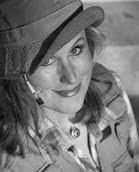 Novelist Ava Finch is the from Sechelt British Columbia and lives in Minnesota, where she works in advertising, collects vintage fishing lures, swims in Lake Superior, and, trains agility dogs. Fishing With RayAnne (Lake Union, ’15) is her first novel, originally written as a screenplay, she is now adapting it to television as well as writing the sequel, Reeling. Her Twitter handle is @ava_finch and you can find Ava on Facebook.
Novelist Ava Finch is the from Sechelt British Columbia and lives in Minnesota, where she works in advertising, collects vintage fishing lures, swims in Lake Superior, and, trains agility dogs. Fishing With RayAnne (Lake Union, ’15) is her first novel, originally written as a screenplay, she is now adapting it to television as well as writing the sequel, Reeling. Her Twitter handle is @ava_finch and you can find Ava on Facebook.
October 31, 2016
Guest Post: Crashing Through Doubt by Author Holly Robinson
Doubt. It’s the thread that weaves through every writer’s life at one time or another. Oh, hell. All the time. Today author Holly Robinson shares with us how she crashed through personal and professional doubt, the end result being crossing two finish lines and continuing on two wonderful paths. Not that I’m surprised. (I’m proud of my friend, that’s for sure!)
Please welcome Holly back to WFW.
Amy xo
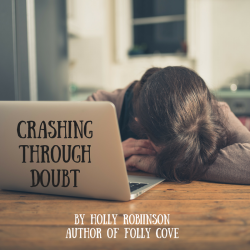
Crashing Through Doubt and Leaving Eeyore Behind
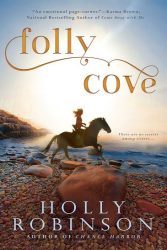 I’m the mother of three champion long distance runners. I cheered them on at their races, bellowing, “Go, go, go!” Then I’d go home and eat cookies on the couch.
I’m the mother of three champion long distance runners. I cheered them on at their races, bellowing, “Go, go, go!” Then I’d go home and eat cookies on the couch.
Time passed. My kids left home and continued to run. Meanwhile, my butt kept getting wider and my belly softer. My excuse? I’m a writer. I don’t have to sprint to my laptop, which lives on a table too close to the fridge.
Then, six months ago, I was finishing my most recent novel, Folly Cove, when my editor suffered a serious medical event that caused her to take an indefinite leave. I was devastated on her behalf. This is our fifth book together and I’ve known her for many years. She is a dear friend as well as a trusted colleague.
On top of that personal loss, I was seized by professional anxiety. I no longer had an editor championing my work, and no contract for a subsequent book. It took me twenty-five years to publish my first novel (not for lack of trying, believe me). I didn’t even have an idea for my next book. Now what?
I have nightmare flashbacks to my early frustrating years as a writer, when I wrote six novels in my twenties and thirties only to have all of them rejected. The publishing industry is in turmoil, with fewer editors willing to take risks on authors who aren’t either debut novelists or bestselling writers. I am neither. What if I never published another book? My career was most likely over.
My level of anxiety was such that I couldn’t sleep at night. I suddenly developed severe pain in my jaw brought on by clenching my teeth.
As I struggled to cope, I spotted an ad in our local paper for a “Couch to 5K” program run by a local fitness coach. I couldn’t imagine running even one kilometer, never mind five. Still, the cost of the program was right—free!–and the coach turned out to be a lithe woman in her seventies who assured me I could do the program without blowing out my knees.
So off I went, three times a week for eight weeks, running with a group of men and women who became my community. We were working toward our “big race,” a 5K at the end of the summer. I stuck faithfully to the practices and found myself looking forward to them. Each time I ran, I slept better.
I also got an idea for a new novel, born while running along a busy street behind a woman in my group who I’d promised myself I’d catch. (I never did, but it was good to have a goal.) I started writing the new book, just a few paragraphs here and there, without letting myself think beyond the next page.
Each time I ran, it wasn’t my legs or the fact that my ass in shorts looks like Homer Simpson’s that made me want to quit. It was my inner doubt. That doubt sounded a lot like Eeyore, the doleful, pessimistic donkey in the Winnie-the-Pooh series. My Eeyore mournfully assured me that I was doomed to fail. “This is too hard,” he moaned in my ear. “Just walk, already. So much easier! What are you, crazy?”
At times, it felt like Eeyore was waiting around every corner, ready to trip me with his hoof. “Lie down! Your legs hurt! You’re killing yourself!” he said. “You’ll probably have a heart attack!”
I blocked out his voice by focusing on the scenery. Or, when the going was really hard, I just pretended my feet were on a conveyor belt.
By the time the 5K race rolled around, I was determined to earn that damn t-shirt. Eeyore came with me part of the way. “You’re a nut case, I’m telling you,” he complained. “You’ll probably get heat stroke. And isn’t that a blister on your heel?”
I tuned him out by thinking about my new novel. What if one of my characters was a runner? I wrote a scene in my head where she was running in the rain, because it started to rain during final stretch of the race, bucketing down so that I could barely see the runners in front of me.
“You’ll slip and fall,” Eeyore warned.
I put my head down and kept running, muttering, “Shut up, shut up, shut up, Eyore,” until finally he was quiet, astounded when I left him behind and crossed the finish line. I wasn’t even last!
The parallel here is obvious: when my anxiety about writing surfaced, it was because I was thinking about things outside of my control, like my editor ever being able to work again, whether Folly Cove would sell well enough for me to get another contract, or how I would ever write a new book.
Running changed everything for me. I ran my first 5K one step at a time, with a community who supported my efforts. You can only finish a race if you start it. Likewise, you can only write a book if you put words on the page, one at a time. The surest way to fail? Skip the practices.
Folly Cove is a special novel to me now. It’s coming out as I face another race—a 5K in October—and the next phase of my career as a novelist. Eyore is still there, moaning, but I’ve learned to tune him out and crash through my doubts, enjoying the scenery along the way.
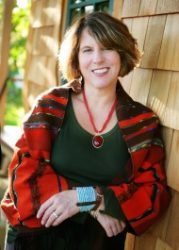 Novelist, journalist and celebrity ghost writer Holly Robinson is the author of several books, including The Gerbil farmer’s Daughter: A Memoir and the novels The Wishing Hill, Beach Plum Island, Haven Lake, and Chance Harbor. Her newest novel, Folly Cove, will be published by Berkley/Penguin in October 2016. Holly’s articles and essays appear frequently in publications such as Cognoscenti, The Huffington Post, Parents, Redbook and dozens of other newspapers and magazines. She and her husband have five children and a stubborn Pekingese. They divide their time between Massachusetts and Prince Edward Island, and are crazy enough to be fixing up old houses one shingle at a time in both places. Visit her at www.authorhollyrobinson.com and on Twitter @hollyrob1.
Novelist, journalist and celebrity ghost writer Holly Robinson is the author of several books, including The Gerbil farmer’s Daughter: A Memoir and the novels The Wishing Hill, Beach Plum Island, Haven Lake, and Chance Harbor. Her newest novel, Folly Cove, will be published by Berkley/Penguin in October 2016. Holly’s articles and essays appear frequently in publications such as Cognoscenti, The Huffington Post, Parents, Redbook and dozens of other newspapers and magazines. She and her husband have five children and a stubborn Pekingese. They divide their time between Massachusetts and Prince Edward Island, and are crazy enough to be fixing up old houses one shingle at a time in both places. Visit her at www.authorhollyrobinson.com and on Twitter @hollyrob1.
October 26, 2016
Guest Post: Author Nicole Blades Doesn’t Feel Constrained by the Women’s Fiction Label
When it comes to writing advice, I tend to think simple is best because it’s the most direct and the most useful, the kind of advice that doesn’t wrap us up in trying to figure it out, leaving us time for, you know, writing. That’s what we have here today with author Nicole Blades, in addition to a peek inside her new novel, The Thunder Beneath Us.
As I start writing my next novel, I loved learning what sparked this one for Nicole. (And her main character has the best name. Pun intended!)
What moment sparked your latest work-in-progress? Tell us in the comments!
And please welcome Nicole Blades to WFW!
Amy xo
Author Nicole Blades Doesn’t Feel Constrained by the Women’s Fiction Label
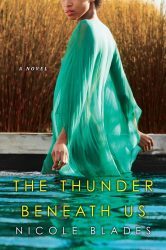 Amy: Nicole, welcome to Women’s Fiction Writers and congratulations on your second novel, The Thunder Beneath Us!
Amy: Nicole, welcome to Women’s Fiction Writers and congratulations on your second novel, The Thunder Beneath Us!
This novel deals with a long-held secret and tragedy, so I wonder what could prompt that situation to grab you. Can you tell us about the moment the idea for your novel sparked inside you?
Nicole: Thanks for having me, Amy!
The idea for this book sparked from a magazine story I read about six years ago about these three brothers who went duck-hunting as part of their Christmas get-together. But it all turned horrible when the family dog accidently punched a hole in the lightly frozen lake. The brothers tried to save the dog, and all three of the men were pulled down into freezing water. Two of the brothers drowned and one survived.
The story really stayed with me. I kept thinking about the level of guilt the one surviving brother probably carried, and how that kind of torment could really alter how he sees himself moving forward. Although the brothers were grown men when the accident happened, I started wondering how that heaviness and guilt would translate to someone who was just a teenager when their life fractured apart.
Amy: As writers, we all have ways we write novels. What’s your secret ingredient for writing your stories? I think mine is jalapeno popcorn! I’ve also taken a liking to index cards. Totally different but both important in their own ways!
Nicole: I don’t know if I have a secret ingredient, but something I kind of insist on having around when I’m writing is natural light. I need to be able to look out a window and let my mind roam. It’s simple, but really important, and the sun and daylight coming through the window as I write seems to open up something up in me and allows me to settle into the work. Of course, this isn’t possible when I’m writing late at night. For those times when it’s late and the house is quite and I’m pushed up against a deadline, my secret ingredient might be having my music playing low in the background. I have a playlist that I put together that helps to create the mood and emotion I’m hoping to set down on the page.
Amy: Without giving too much away, what was the most difficult scene to write in this book. Why was it difficult and how did you get through it? How did you feel about that scene when you finished
Nicole: It was scene between my protagonist Best Lightburn and her father. Without spoiling anything, the reason why it was so difficult was because it was a very emotional moment between them. Best and her father have a very close relationship, and having this significant moment meant going deep and dark and that’s not a “default” station for me.
When I finished writing the scene I felt relieved because I was happy with it and I was also happy that I got through it and it was behind me.
Amy: Now that we know a little about how you wrote The Thunder Beneath Us, would you tell us a little about the story? Maybe something that isn’t on the back cover?
Nicole: Best Lightburn is this quick-witted, headstrong, remarkable young woman. But she’s also broken. She’s wounded in that deep way. And even though so much of her pain and torment seems like it has scabbed over, it’s all still rather fresh and at the surface—maybe more than even she realizes. THUNDER is about Best finally trying to heal and put the fracture pieces back together.
Amy: As you can probably tell, I don’t shy away from the women’s fiction label. I don’t feel constrained by it, am not insulted by it. But many women author cringe. Where do you fall on the Women’s Fiction Label continuum?
Nicole: To be honest with you, I don’t have any issues with the “women’s fiction” label. Nor do I feel constrained by it. I once had an old journalist colleague ask me how the “whole chic lit thing” was going and I must admit that my lip started to curl a little, but that was because it sounded dismissive, even though I know him and don’t believe it was his intention. However, if someone’s talking about women’s fiction in a way that feels like they are trying to push it into the margins, then I have an issue.
Amy: What’s your best advice for aspiring authors?
Nicole: Three things: First, You have to read. You must. Be voracious and various about it. Read different genres and styles and quality of writing, because it’s all going to help your own writing and develop your storytelling. Secondly, you have to write. Practice the craft. It doesn’t come magically to anyone (and if they say so, I’ve got a bridge to sell you in Brooklyn!).
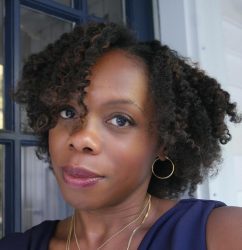 Nicole Blades is a writer and journalist who has been putting her stories on paper since the third grade. Born and raised in Montreal, Quebec, by Caribbean parents, Nicole moved to New York City and launched her journalism career working at Essence® magazine. She later co-founded the online magazine SheNetworks, and worked as an editor at ESPN and Women’s Health. Now a freelance writer, her features and essays have appeared in MORE magazine, Cosmopolitan, NYTimes.com, WashingtonPost.com, BuzzFeed, xoJane.com, BlogHer.com, and HuffPost. She also maintains Ms. Mary Mack, a blog that aims to bring compassion and common sense back to parenthood. Visit her online at NicoleBlades.com.
Nicole Blades is a writer and journalist who has been putting her stories on paper since the third grade. Born and raised in Montreal, Quebec, by Caribbean parents, Nicole moved to New York City and launched her journalism career working at Essence® magazine. She later co-founded the online magazine SheNetworks, and worked as an editor at ESPN and Women’s Health. Now a freelance writer, her features and essays have appeared in MORE magazine, Cosmopolitan, NYTimes.com, WashingtonPost.com, BuzzFeed, xoJane.com, BlogHer.com, and HuffPost. She also maintains Ms. Mary Mack, a blog that aims to bring compassion and common sense back to parenthood. Visit her online at NicoleBlades.com.
Connect with Nicole:
Twitter: https://twitter.com/NicoleBlades
Instagram: https://www.instagram.com/nicole_blades/
Facebook: https://www.facebook.com/WriterNicoleBlades/
Website: http://nicoleblades.com
Buy the book:
Amazon: bit.ly/THUNDERbook
B&N: http://www.barnesandnoble.com/w/the-thunder-beneath-us-nicole-blades/1123344383?ean=9781496704597
Kensington: http://www.kensingtonbooks.com/author.aspx/31790
October 19, 2016
Guest Post: Finding Inspiration for Novel Writing by Author Gail Cleare
When someone asks where my ideas for novels come from, I’m always tempted to say “Target.” It’s often hard to pin down what sets off a writer on the glorious and torturous adventure of novel writing, because novels aren’t one thing or one idea. But, there’s usually a nugget or a spark, and I often ask authors about that spark. The one moment that spurred them forward to discover the rest of the story.
For our guest blogger today, author Gail Cleare, her moment of inspiration came in a dream, and she’s here today to share with us how her real life showed up in her dream, and how her dream resulted in the opening to her new novel, THE TASTE OF AIR.
Please welcome Gail Cleare to WFW, and share with us where you found the nugget of inspiration for you novel!
Amy xo
Dreaming of Inspiration
by Gail Cleare
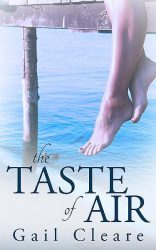 Apparently, I do some of my best thinking while asleep—my two published novels both began as dreams. It’s not a bad way to plot. The tricky part is remembering the details long enough to type notes on your iPhone.
Apparently, I do some of my best thinking while asleep—my two published novels both began as dreams. It’s not a bad way to plot. The tricky part is remembering the details long enough to type notes on your iPhone.
I’m talking about the kind of dream where you wake up with a scene hanging in front of you and for a minute, you’re somewhere in the middle. Sometimes the visual images are part of a sequence and if I don’t come back to reality too fast, I can capture the big picture. My subconscious is a powerful creative tool and a magical playground.
The first time this happened, I dreamed I was walking through an old shop, discovering lovely treasures, magical objects and Tarot cards hidden in dusty display cases. This scene became the second chapter of DESTINED, when Emily explores the building and finds the ace of pentacles in the cash register. The dream told me that my main character would follow prophetic signs like the classic heroes on quests, and her spiritual coming-of-age story could be built around the Tarot’s rich imagery. I wrote a new chapter every morning, sitting in bed with coffee and my laptop. When my mind was still in the semi-dream state, words seemed to flow effortlessly. In five weeks, I had completed the first draft at 120,000 words.
Another dream inspired my new book, THE TASTE OF AIR, women’ fiction released this fall from Red Adept Publishing. This time I was walking through a cozy living room and knew it was my mother’s house, decorated in her favorite colors and style, but I didn’t recognize any of the furnishings exactly so it was familiar and strange, at the same time. I knew it was her private, secret house. I felt like an intruder.
This dream was connected to a real-life event. When my sister and I found out that my mother’s name didn’t match the one on her birth certificate, it set me off thinking…did I ever really know her? What was she really like, when she was my age? What did she go through, that she kept a secret from us forever. What if there was a lot more to the story?
The scene from my dream is almost exactly what happens to Nell at the beginning of THE TASTE OF AIR. In the book, she finds out that her mother has a lakeside cottage in Vermont and goes there to investigate. The place feels oddly familiar to Nell when she enters, though she has never been there before. She and her sister Bridget wonder if they ever really knew their mother at all. It turns out there is a lot more to the story, going all the way back to 1965 in Saigon, when their parents first met during the Vietnam War. Nell and Bridget must learn to accept a new picture of reality as their assumptions about the past are revised, and their own lives take on new meaning.
The story is total fiction—except for the rush of familiar strangeness Nell experiences when she sees Mary’s cottage. That sensation is still very real to me.
“Looking at the oddly familiar house brought the scent of cinnamon to mind along with a memory of getting off the school bus to find Mom in her apron and warm applesauce cake waiting on the kitchen counter.
For some reason, the place was making her feel odd. Funny coincidence that it looks so much like our old house. The memory blurred and shifted in her mind like a dream from long ago.
She looked at the key in her hand as if it was a bug that might bite her. Then she walked up the steps, put the key in the lock, and turned it. The red door swung open….”
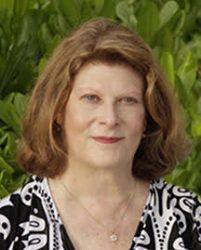 Gail Cleare has written for magazines, newspapers, Fortune 50 companies and AOL. Her award-winning ad agency represented the creators of the original Teenage Mutant Ninja Turtles. She was the turtle Leonardo’s date for the world premier of the second movie, and got to wear a black evening gown and sparkly shoes.
Gail Cleare has written for magazines, newspapers, Fortune 50 companies and AOL. Her award-winning ad agency represented the creators of the original Teenage Mutant Ninja Turtles. She was the turtle Leonardo’s date for the world premier of the second movie, and got to wear a black evening gown and sparkly shoes.
As a fine art and nature photographer, Gail’s work is held in private collections across the US, and she can often be found stalking creatures with a 300 mm lens.
Her first novel, Destined, a novel of the Tarot, won honorable mentions at the New England Book Festival and the Green Book Festival. Her second novel, women’s fiction titled The Taste of Air, was released by Red Adept Publishing in September, 2016. The unedited manuscript won a gold medal from HarperCollins’ website Authonomy, and was shortlisted for a Somerset Award.
Gail Cleare lives on an historic farm in New England with her family and dogs, cats, chickens, black bears, blue herons, rushing streams and wide, windy skies.
gailcleare.com/tasteofair.html
facebook.com/GailCleareAuthor
twitter.com/gcleare
blipfoto.com/gcleare
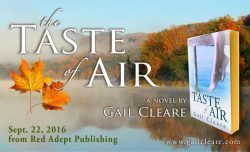
Women's Fiction Writers
- Amy Sue Nathan's profile
- 543 followers



